 W
WThe majority of Fiji's islands were formed through volcanic activity starting around 150 million years ago. Today, some geothermic activity still occurs on the islands of Vanua Levu and Taveuni. Fiji was settled first by [[Austronesians of the "Lapita Culture", about 1,500 - 1,000 years BCE], followed by a large influx of people with predominantly Melanesian genetics about the time of the beginning of the Common Era. Europeans visited Fiji from the 17th century, and, after a brief period as an independent kingdom, the British established the Colony of Fiji in 1874. Fiji was a Crown colony until 1970, when it gained independence as the Dominion of Fiji. A republic was declared in 1987, following a series of coups d'état.
 W
WThe Arya Pratinidhi Sabha of Fiji is the national body for all the Arya Samajs in Fiji. It was formed in 1918 and registered as a religious body through the efforts of Manilal Doctor, who was in Fiji from 1912 to 1920 at the behest of Mahatma Gandhi to provide legal assistance to the Fiji Indians. Its first President was Swami Manoharanand Saraswati who had arrived in Fiji, from India, in 1913. The Arya Pratinidhi Sabha of Fiji is affiliated to Sarvadeshik Arya Pratinidhi Sabha based in New Delhi.
 W
WThe Arya Samaj was the first religious, cultural and educational Fiji Indian organisation established in Fiji. From its inception, in 1904, it attracted the young, educated and progressive Hindus into its fold. During the first three decades of the twentieth century, it was the sole voice of the Indian community in Fiji and as Fiji Indians won political rights, it was not surprising that first Indian members of the Legislative Council were all Arya Samajis. The influence of Arya Samaj over the Indians in Fiji gradually waned as other organisations representing Indians were established but it remained the dominant force in politics until 1959. The modern day Arya Samaj in Fiji still speaks out on issues affecting its members and its activities are visible through the numerous educational institutions that it manages.
 W
WThomas Baker was a Methodist missionary in Fiji, known as being the only missionary in that country to be killed and eaten, along with seven of his Fijian followers. The incident occurred in the Navosa Highlands of western Viti Levu in July 1867, and the rock used to kill Baker is still displayed in the village of Nabutatau. The soles of his leather sandals, which were also cooked by the cannibal tribe, are in Fiji Museum in Suva. Records show that Baker was killed and eaten as a result of him touching a chief's head, which in Fijian culture, is considered to be very disrespectful.
 W
WThe Battle of Kaba was fought at Kaba, Fiji, in 1855 between self proclaimed Fijian Tui Viti (King) Cakobau and his enemies from Rewa and Bau. In 1853, Cokobau had previously attempted to take the rebel positions at Kaba, in which he was brutally defeated. This time though Cakobau was supported by a strong fleet from Tonga, sent by Tu'i Tonga (King) Taufa'ahau of Tonga and Enele Ma'afu, governor of the Tongan population in Fiji. The battle was a major victory for Cakobau, thanks mainly to his Tongan allies, and cemented his leadership over Fiji. It also, however, underlined his dependency on the military power of Tonga, especially since Ma'afu remained in Fiji.
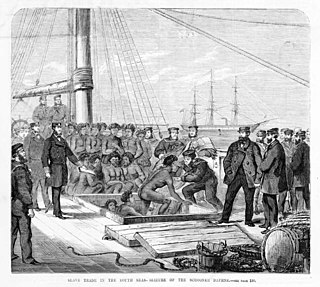 W
WBlackbirding involves the coercion of people through deception or kidnapping to work as slaves or poorly paid labourers in countries distant to their native land. The term has been most commonly applied to the large-scale taking of people indigenous to the numerous islands in the Pacific Ocean during the 19th and 20th centuries. These blackbirded people were called Kanakas or South Sea Islanders. They were taken from places such as the Solomon Islands, Vanuatu, Niue, Easter Island, Gilbert Islands, Tuvalu and the islands of the Bismarck Archipelago amongst others.
 W
WThe British Western Pacific Territories (BWPT) was the name of a colonial entity, created in 1877, for the administration, under a single representative of the British Crown, styled High Commissioner for the Western Pacific, of a series of Pacific islands in and around Oceania. Except for Fiji and the Solomon Islands, most of these colonial possessions were relatively minor.
 W
WThe Colony of Fiji was a British Crown colony that existed from 1874 to 1970 in the territory of the present-day nation of Fiji. London declined its first opportunity to annex the Kingdom of Fiji in 1852. Ratu Seru Epenisa Cakobau had offered to cede the islands, subject to being allowed to retain his Tui Viti title. His demand was unacceptable to both the British and to many of his fellow chiefs, who regarded him only as first among equals, if that. Mounting debts and threats from the United States Navy had led Cakobau to establish a constitutional monarchy with a government dominated by European settlers in 1871, following an agreement with the Australian Polynesia Company to pay his debts. The collapse of the new regime drove him to make another offer of cession in 1872, which the British accepted. On 10 October 1874, Britain began its rule of Fiji, which lasted until 10 October 1970.
 W
WAlfred William Buchanan Dufty (1858–1924) was an English-born Australian photographer.
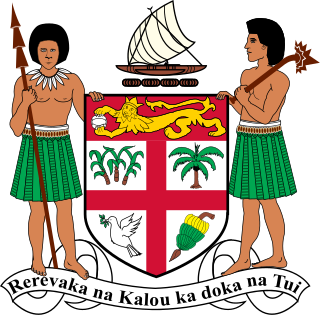 W
WThe colonial Governors of Fiji relied on the Executive Council for advice on proposals for legislation which, after being discussed in the Executive Council meetings, came before the Legislative Council in the form of bills. In this way, the Executive Council was the chief policy-making body and performed cabinet-like functions, but being advisory, was not yet a cabinet in function. This role changed in 1964 with the introduction of the membership system.
 W
WThe Federal Council of Australasia was a forerunner to the current Commonwealth of Australia, though its structure and members were different.
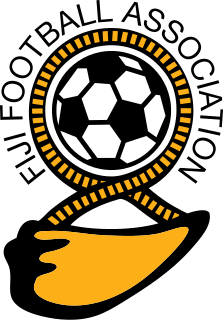 W
WThe Fiji Football Association is the governing body of football in Fiji. It came into existence in 1961, replacing the ethnically based Fiji Indian Football Association. The Indian Association was formed in 1938 but football in Fiji had a much humbler beginning.
 W
WThe pound was the currency of Fiji between 1873 and 1969. It was subdivided into 20 shillings, each of 12 pence.
 W
WThe first Fiji expedition undertaken by the United States occurred in October 1855 during the civil war on the islands. In response to the alleged arson attacks on the American commercial agent in Lautoka, Viti Levu, the navy sent a warship to demand compensation for the attack from Seru Epenisa Cakobau, the Vunivalu of Bau and self-proclaimed Tui Viti.
 W
WFiji was a British Crown Colony from 1874 to 1970, and an independent Dominion in the Commonwealth from 1970 to 1987. During this period, the Head of State was the British Monarch, but in practice his or her functions were normally exercised locally by the Governor prior to independence, and by the Governor-General prior to the proclamation of a republic on 7 October 1987.
 W
W W
WAnatole von Hügel was the second son of the Austrian nobleman Charles von Hügel and his Scottish wife Elizabeth Farquharson. His elder brother was Friedrich von Hügel and his sister was Pauline von Hugel.
 W
WKanakas were workers from various Pacific Islands employed in British colonies, such as British Columbia (Canada), Fiji, Solomon Islands, Vanuatu, Papua New Guinea and Queensland (Australia) in the 19th and early 20th centuries. They also worked in California and Chile.
 W
WThe Kingdom of Fiji, also known as the Kingdom of Viti, was a short-lived monarchy in Fiji. It existed from 1871 to 1874, with Ratu Seru Epenisa Cakobau as King.
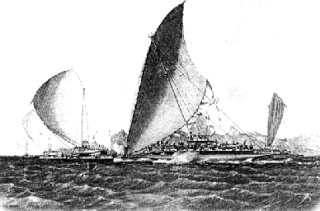 W
WThe Lasakau Sea Warriors were a 19th-century warrior sub-culture in the pre-colonial state of Bau, in Fiji. The sea warriors were instrumental in spreading Bau's political power throughout the South Pacific archipelagic islands. The rise of the eminent islet of Bau amongst other embryonic states was due mainly to the projection of sea power through its naval forces. Bauan chief Ratu Loaloadravu Tubuanakoro was praised by French Captain Dumont D'Urville in May 1827 for his geographic knowledge of the Fijian archipelago signifying Bau's naval influence. More far-ranging than Bau's land warriors led by the Vusaradave clan, the Lasakau clan became the leading proponents of war and tribute for the emerging island kingdom. They became known as the Bai kei Bau or 'War fence of Bau'. Sahlins made the crucial observation that," The kings of Bau based their rule not on native cultivators but on native sailors and fishers-which is to say in Fijian categories, as in political strategies, not on the land but on the sea". This was the great political transformation that catapulted Bau to power over other pre-colonial kingdoms.
 W
WThe Legislative Council of Fiji was the colonial precursor to the present-day Parliament, which came into existence when Fiji became independent on 10 October 1970.
 W
WThe monarchy of Fiji arose in the mid-nineteenth century when native ruler Seru Epenisa Cakobau consolidated control of the Fijian Islands and declared himself King or paramount chief of Fiji. In 1874, he voluntarily ceded sovereignty of the islands to Britain, which made Fiji a Crown colony within the British Empire. After nearly a century of British rule, Fiji became a Dominion, an independent sovereign state within the Commonwealth of Nations with Elizabeth II as head of state. After a second military coup in 1987 led by Lieutenant Colonel Sitiveni Rabuka, Fiji became a republic, and the monarchy was ended. Nevertheless, the Great Council of Chiefs recognised Elizabeth II as Tui Viti or the traditional Queen of Fiji, but the position is not one of a constitutional, or otherwise legal nature. The Great Council of Chiefs was disestablished in 2012 by decree of President Ratu Epeli Nailatikau. Elizabeth II does not use the title, and the Fijian government does not recognise it.
 W
WIn 1871, Ratu Seru Epenisa Cakobau, the Vunivalu of Bau, succeeded in unifying the previously warring tribes throughout the Fiji Islands by establishing the Kingdom of Viti, with the support of foreigners. Cakobau proceeded to set up a constitutional monarchy, in which both the legislature and the executive were dominated by foreigners.
 W
WThe Reconciliation and Unity Commission was a proposed government body to be set up if the Reconciliation, Tolerance, and Unity Bill, which was introduced into the Fijian Parliament on 4 May 2005 was passed. The legislation proposed to empower the Commission to grant amnesty to perpetrators of the Fiji coup of 2000, and compensation to victims of it from 19 May 2000 through 15 March 2001. The Fijian President would retain a veto over the granting of amnesty.
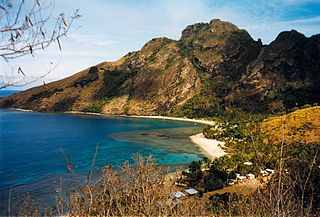 W
WThe Second Fiji expedition was an 1859 United States Navy operation against the native warriors of Seru Epenisa Cakobau on the island of Waya in Fiji. Following the death of two American traders on Waya, the Pacific Squadron launched a punitive expedition against the Wayans and defeated them in a pitched battle at the village of Somatti.